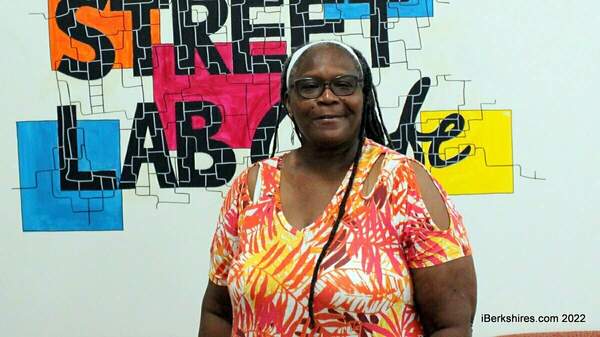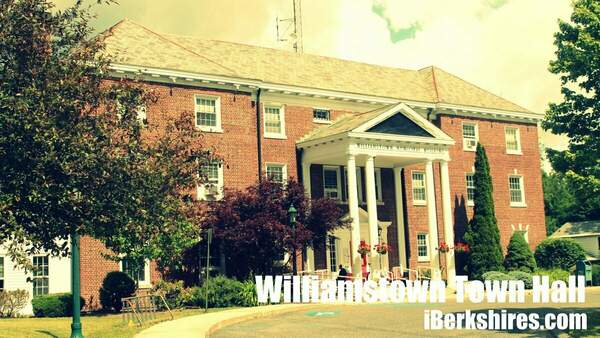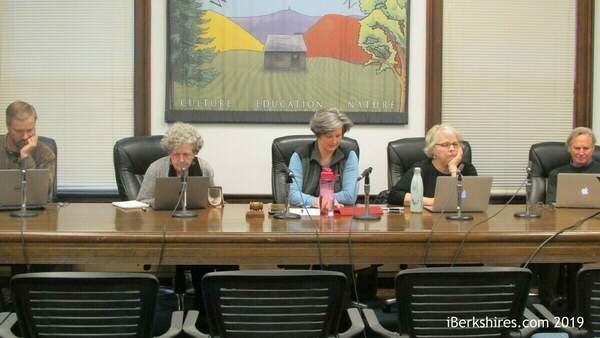Williams Students Study Farming for BRPC
 Williams professor Sarah Gardner had her students perform a 'foodshed' study on the county to help regional planning. |
Williams College students spent the last 2 1/2 months mapping and studying the county's farming as it stands today for the Berkshire Regional Planning Commission.
The results show that local farms are heading toward bankruptcy despite the acres of viable land. But there's a lot of work to be done for that land to become used.
"The tragedy of it is that a lot of the older farmers we interviewed say that none of their kids want to take over the farm because they've seen them struggle, they've seen them lose money," said Williams College professor Sarah Gardner on Monday. "It's hard work for no money and they feel like the government is not supporting them.
"If we don't turn that around, we'll just eventually see the whole county be shopping malls and housing developments."
Three of Gardner's students have been looking at local farming by interviewing farmers, identifying used and unused prime farmland and then comparing it to the typical American diet.
Amy Kacala, BRPC senior planner, presented the preliminary results to the commission on Thursday and expects the final report to be complete in February with recommendations on how the commission can support a turn-around.
The study illustrates that while the number of farmers in the county is growing, the farms are of smaller scale. They are farms run mostly as a hobby or for secondary income because of a lack of infrastructure, according to Gardner, associate director of the college's Center for Environmental Studies.
The study mapped and compared the possibilities for farming with the realities of farming. There is no profit in farming, Gardner said: Nearly half of the county's existing farms are making less than $5,000 a year.
"The big problem is that it's not profitable. Most of the farmers that we talked to are losing money each year," she said. "What we really need here is economically viable farms that can support a family and even provide jobs to have a healthy farm economy."
Major issues holding the county back include large grocery stores, schools and hospitals not buying locally, and a lack of a slaughterhouse, creamery or bottling center.
Hospitals and schools could help support local farming by buying locally, but their kitchens need the food packaged in a way that local farms are not equipped to do. The local institutions ultimately buy from out-of-town suppliers. Farmers would do better if they could plan on how much they might sell through contracts with local stores and businesses.
The county's biggest farming industry is dairy, but dairy farmers here cannot compete against the midwestern states because prices are set by the federal government, Gardner said. To stay in business, Vermont dairy farmers are switching to organic milk, but the move is too expensive and risky here, she said.
Despite the major obstacles to turn the county's farming picture around, there is tremendous potential, Gardner said.
"We could increase local food production immensely," she said. "There is a lot of unproductive farmland in the county right now and it's in places you wouldn't normally expect."
That land can be turned productive if the county can prove that farming here is profitable and attract larger-scale farms and infrastructure, she said.
There are old farms no longer being used because there is nobody to work them, or the property is owned as a second home by people with no intention of farming on it. The lower-level hillsides could revert back to grazing grounds for meat production.
"We have almost no swine in Berkshire county. Almost no poultry," Gardner said. "There is a little bit of beef but it's mostly small scale."
To protect the available farmland, Gardner recommends creating agricultural zoning to keep it from being developed. Some of the best farmland in the county is now home to developments such as the Berkshire Mall, she said.
"We don't have the legal structure in place to do that but if we're serious about local food production that should become a priority," she said.
However, Community Supported Agriculture farms are doing well in the county but high membership costs prevent most of the community from joining, Gardner said.















